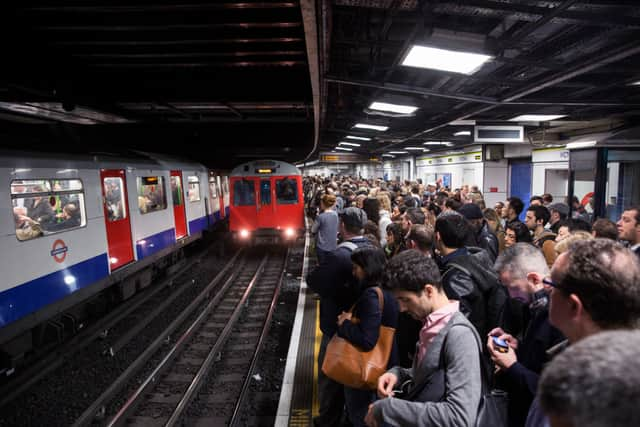TfL London Underground: From the Fleet line to the Viking line, the names the Tube lines were almost called
and live on Freeview channel 276
The London Underground is iconic for many reasons, from its distinct roundels to its rich history as the oldest underground network in the world.
The names of each line are known across the country, but not many know that they have seen name changes and had proposed new names rejected through the years.
Advertisement
Hide AdAdvertisement
Hide AdFrom the Fleet line to the Viking line, we’ve taken a look at the unsuccessful names which never made it to the classic London Underground map.
Bakerloo line: The Bakerloo line was originally called "The Baker Street and Waterloo Railway" when it opened in 1906. This is one of the few lines that has always kept its name from start to finish as even the legislation for building the line was called the Baker Street and Waterloo Railway Act 1896.
Central line: The Central line was opened in 1900 as the Central London Railway. In 1933 the Central London Railway and other transport companies in the London area were amalgamated to form the London Passenger Transport Board, generally known as London Transport. The railway was known as the "Central London Line", becoming the "Central line" in 1937.
District line: Opening in 1868 as the Metropolitan District Railway (MDR), the District line takes its name from its predecessor railway and has remained the same ever since.
Advertisement
Hide AdAdvertisement
Hide AdNorthern line: The Northern line has its origins in two early Tube railways – the City & South London Railway (C&SLR) and the Charing Cross, Euston & Hampstead Railway (CCE&HR). These were joined together in the 1920s and named the Northern line in 1937.
The Northern line had also been referred to as the Edgware, Highgate and Morden line in 1933, then the Modern-Edgware line a year later. Indecision over the name led people to suggest it should be named in the style of the Bakerloo, which had been the Baker Street and Waterloo Railway. Names like Mordenware or Edgmorden were proposed but did not catch on.
In 1937 London Transport renamed it for the last time, after the Northern Heights extensions to Bushey and Elstree that were due to open in 1940.


Hammersmith & City line: The Hammersmith & City line opened as an extension to the Metropolitan Railway in 1864 with both the Metropolitan Railway and Great Western Railway (GWR) operating services across the line.
Advertisement
Hide AdAdvertisement
Hide AdThe Hammersmith & City retains the name it had when it was first proposed to Parliament in 1861, with only a change from Railway to line. From its initial proposal, it was always intended to link Hammersmith in west London to the City, where it initially terminated.
Circle line: The Circle line takes its name from predecessor railways which used to run competing services on its Zone 1 circular route - the Inner Circle (anticlockwise) and the Outer Circle (clockwise).
Although there have been Circle line services running in circles since 1884, the Circle line only became a publicly-facing name, with its own line colour in 1949.
Victoria line: The Victoria line, which first opened in 1968, was named after Queen Victoria. Proposals for the name included the Walvic line , Viking line , Mayfair line and West End line.
Advertisement
Hide AdAdvertisement
Hide AdJubilee line: The Jubilee line was named after Queen Elizabeth II’s Silver Jubilee in 1977, though it didn’t open until two years later. During planning and most of its construction it had been called the Fleet line, after the river flowing underneath London.
Waterloo & City line: The Waterloo & City line is named after its two terminus stations. City station was renamed Bank in 1940, but the railway’s name was not updated.
Metropolitan line: The Metropolitan line was named after its predecessor, the Metropolitan Railway, the first underground railway in the world.
Piccadilly line: The Piccadilly line takes its name from its opening company "The Great Northern, Piccadilly and Brompton Railway", becoming the Piccadilly line soon after.
Advertisement
Hide AdAdvertisement
Hide AdElizabeth line: Although not officially a Tube line, the Elizabeth line was known as Crossrail during the majority of its planning and construction.
In February 2016 it was renamed the Elizabeth line by Boris Johnson, then mayor of London, to honour Queen Elizabeth II. According to the London Transport Museum, the line was nearly named the Churchill line, after the wartime Prime Minister Winston Churchill.
Comment Guidelines
National World encourages reader discussion on our stories. User feedback, insights and back-and-forth exchanges add a rich layer of context to reporting. Please review our Community Guidelines before commenting.
